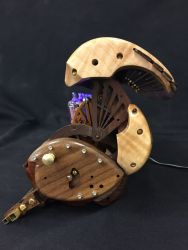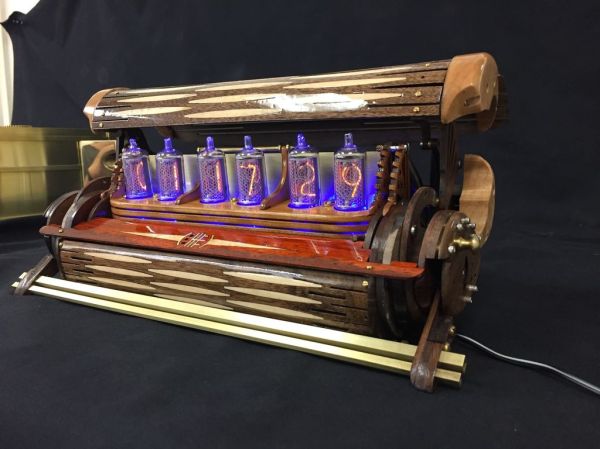When all else fails, there’s amateur radio — and handwritten notes. Both ham radio and clear thinking helped rescue a mother and her son from a recent California camping trip gone wrong. While driving to the campsite in the Stanislaus National forest, the 49-year-old mother had the not-uncommon experience of GPS leading her and her 9-year-old son on a merry chase, sending her down a series of forest roads. Eventually the foliage got too dense for the GPS signals to penetrate, leaving the pair stranded in the forest with no guidance on how to get out.
rabbit5 Articles
DIY Rabbit R1 Clone Could Be Neat With More Hardware
The Teenage Engineering badging usually appears on some cool gear that almost always costs a great deal of money. One such example is the Rabbit R1, an AI-powered personal assistant that retails for $199. It was also revealed that it’s basically a small device running a simple Android app. That raises the question — could build your own dupe for $20? That’s what [Thomas the Maker] did.
Meet Rappit. It’s basically [Thomas]’s take on an AI friend that doesn’t break the bank. It runs on a Raspberry Pi Zero 2W, which has the benefit of integrated wireless connectivity on board. It’s powered by rechargeable AA batteries or a USB power bank to keep things simple. [Thomas] then wrapped it all up in a cute 3D printed enclosure to give it some charm.
It’s software that makes the Rappit what it is. Rather than including a screen, microphone, or speakers on the device itself, [Thomas] interacts with the Pi-based device via smartphone. It makes it a less convincing dupe of the self-contained Rabbit R1, but the basic concept is the same. [Thomas] can make queries of the Rappit via a simple Android or iOS app he created called “Comfyspace,” and the Rappit responds with the aid of Google’s Gemini AI.
If you’re really trying to duplicate the trend of AI assistants, you really need standalone hardware. To that end, the Rappit design could really benefit from a screen, microphone, speaker, and speech synth. Honestly, though, that would only take you a few hours extra work compared to what [Thomas] has already done here. As it is, [Thomas] could simply throw away the Raspberry Pi and just use the smartphone with Gemini directly, right? But he chose this route of using the smartphone as an interface to keep costs down by minimizing hardware outlay.
If you want a real Rabbit R1, you can order one here. We’ve discussed controversy around the device before, too. Video after the break.
Continue reading “DIY Rabbit R1 Clone Could Be Neat With More Hardware”
Rabbit Sighted In The Wild
Here at Hackaday we’re suckers for old abandoned technologies, the more obscure the better. The history of the telephone has plenty to capture our attention, and it’s from that arena that something recently floated past our timeline. [IanVisits] reports a sighting of a Rabbit in a London Underground station. The bunny in question definitely isn’t hopping though, it’s been dead for more than three decades. It’s a base station for a failed digital mobile phone system.
We’ve had a look in the past at CT2, the system this Rabbit base station once formed part of. It was an attempt to make an inexpensive phone system by having the handsets work with fixed base stations rather than move from cell to cell. It was one of the first public digital mobile phone systems, but the convenience of a phone that could both receive calls and make them anywhere without having to find a base station meant that GSM phones took their market.
The one in Seven Sisters tube station is a bit grubby looking, but it’s not the only survivor out there in the field. We have to admit to being curious as to whether it’s still powered on even though its backhaul will be disconnected, as in our experience it’s not uncommon for old infrastructure to be left plugged into the wall for decades, unheeded. Does anyone fancy sniffing for it with a Flipper Zero?
The White Rabbit Nixie Clock
Instructables user [hellboy] — a recent convert to the ways of the laser cutter — is a longtime admirer of Nixie tubes. In melding these two joys, he has been able to design and build this gorgeous work of art: The White Rabbit Nixie Clock.
Going into this build, [hellboy] was concerned over the lifespan of the tubes, and so needed to be able to turn  them off when not needed. Discarding their original idea of having the clock open with servos, [hellboy]’s clock opens by pressing down on a bar and is closed by snapping the lid shut — albeit slightly more complicated than your average timepiece. Given the intricacy of the mechanism, he had to run through numerous prototypes — testing, tweaking and scrapping parts along the way.
them off when not needed. Discarding their original idea of having the clock open with servos, [hellboy]’s clock opens by pressing down on a bar and is closed by snapping the lid shut — albeit slightly more complicated than your average timepiece. Given the intricacy of the mechanism, he had to run through numerous prototypes — testing, tweaking and scrapping parts along the way.
With the power of steam-bending, [hellboy] lovingly moulded walnut planks and a sundry list of other types of wood to define the ‘rabbit’ appearance of the mechanism, and the other parts of the clock’s case. Once again, designing the clock around a row of six pivoting Nixie tubes was no mean feat — especially, as [hellboy] points out, when twenty or so wires need to rotate with them! After a few attempts, the Nixie tubes, their 3mm blue LEDs and associated wires were properly seated.
The Trans-atlantic Battery Bunny Divide

This somewhat frightening armature is the base for the iconic energizer bunny. While we love seeing the guts of popular robotics, this brings up an interesting fact. In Europe, the bunny is the symbol for Duracell. There’s an interesting story where Duracell had used the bunny for years in europe, only to inspire Energizer to copy them stateside in 1989. This one will be available on ebay shortly.
Catch a Duracell battery after the break














